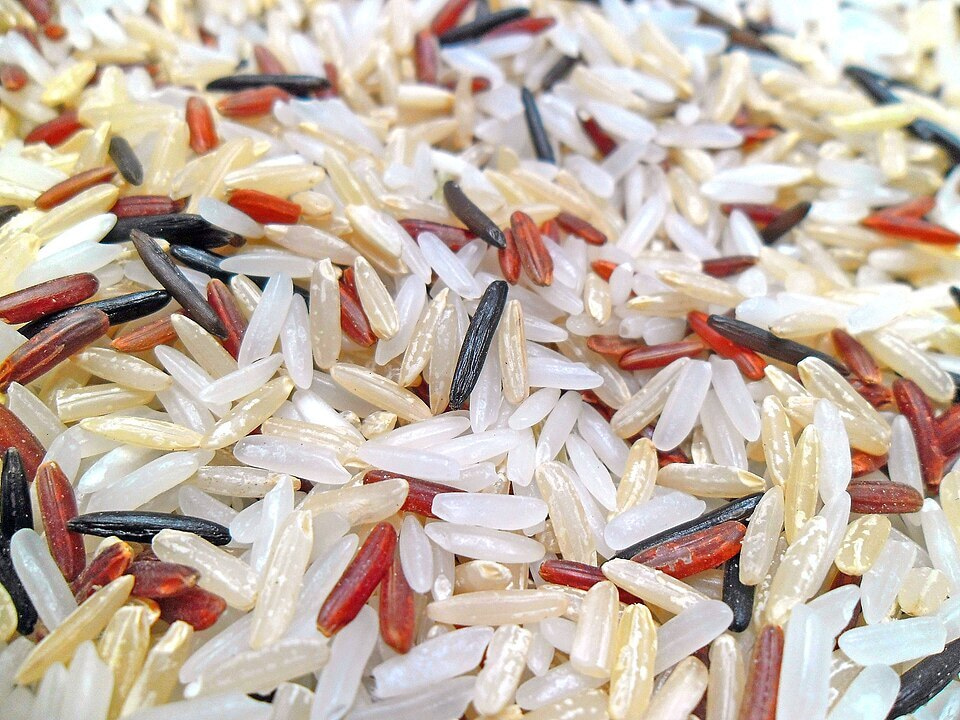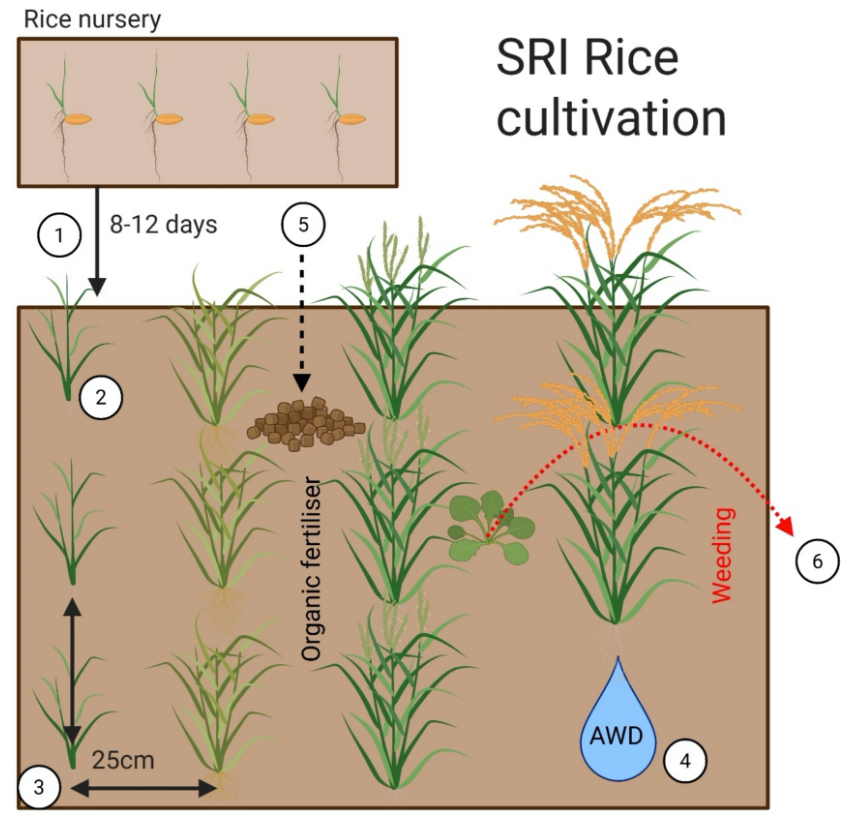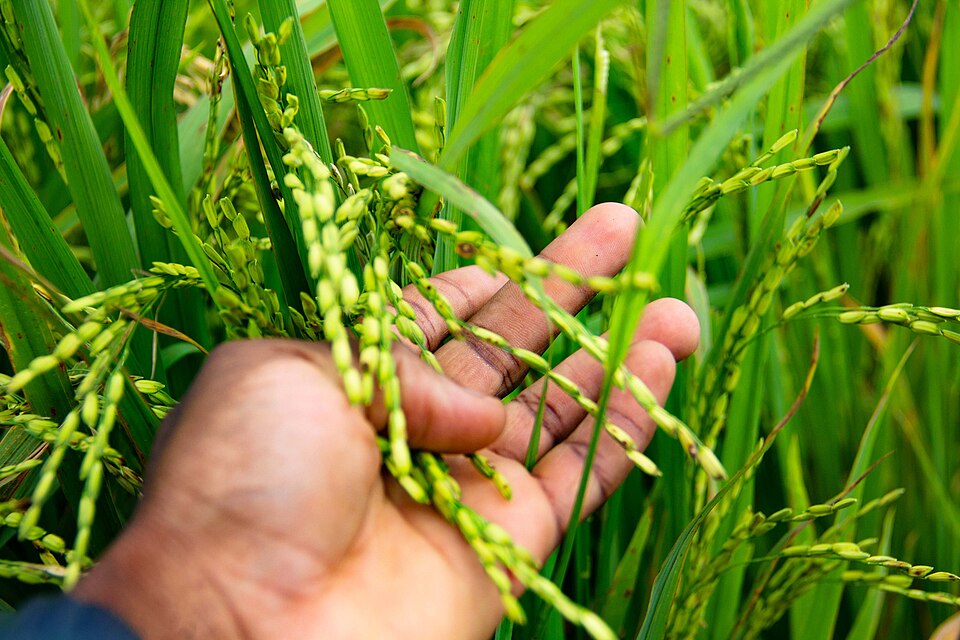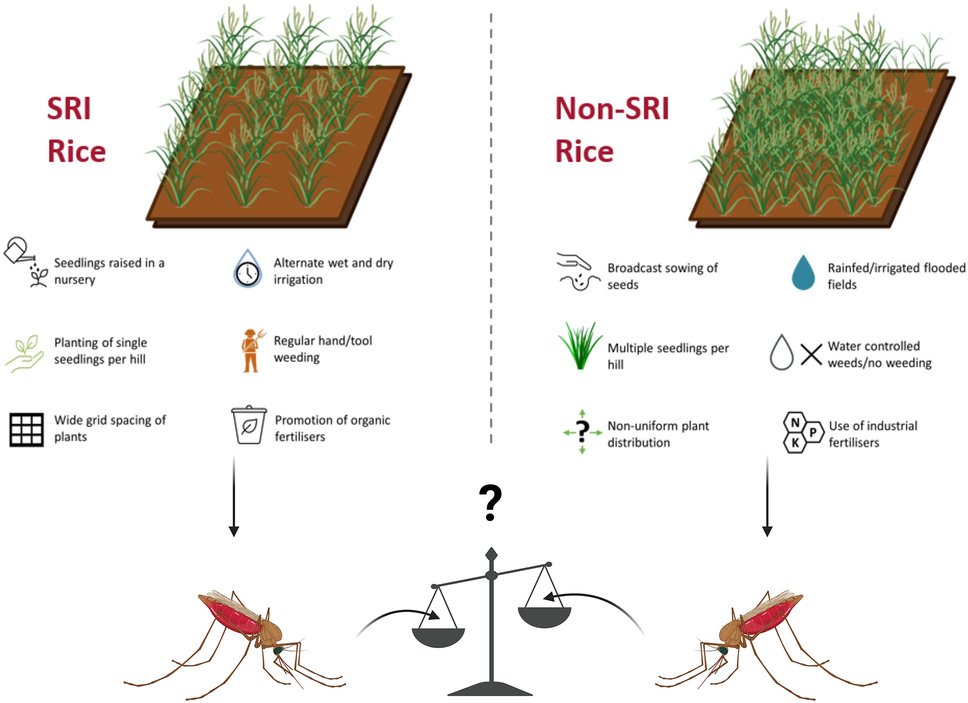Growing rice = growing mosquitoes?
Published in Zoology & Veterinary Science

Featured image: Common forms of consumed rice. Source: Earth100 CC BY-SA 3.0
Rice feeds more than half the world’s people, so when farmers change how they grow it, the effects can be enormous. The Coalition for African Rice Development (CARD) was formed in response to the increasing demand for this staple in Africa, where consumption exceeds production. CARD aimed to double the production of rice in the continent by 2018, which it successfully achieved. Phase 2 now has the new target of doubling production again, from 28 million MT to 56 million MT by 2030. This is all part of the Green Revolution in Africa, an ambitious drive seeking to increase agriculture and provide food security.

To meet these ambitious goals, countries are experimenting with different cultivation methods. One of the most discussed is the System of Rice Intensification (SRI), a series of integrated practices to increase rice cultivation outputs while reducing inputs. SRI promises higher yields, lower water use, and fewer chemicals going into the system. It’s attractive because it can be more water‑efficient and climate‑resilient than traditional flooded paddies. At the same time, land‑use change and irrigation are among the strongest drivers of mosquito ecology. While CARD does not specifically promote SRI, some member countries have piloted it within their national strategies.
The ‘paddies paradox’ notes that rice irrigation does not seem to increase the risk of malaria transmission despite the increase of mosquito breeding sites. There are many possible explanations for this, and the relationship is not actually straightforward. A 2022 review and meta-analysis by Chan et al. found that communities associated with rice irrigation do have greater malaria risk, as well as more mosquitoes overall.

Can a climate‑smart farming method unintentionally make malaria worse, better, or just different?
A recent review by Hardy et al. outlines the ecology of Anopheles mosquitoes in the context of SRI:
1. More sunlight
SRI plants rice more sparsely, with single seedlings in a grid rather than dense clumps. That opens the canopy and lets more sunlight reach water surfaces. More light often means more algae and microbial food for mosquito larvae, and many malaria vectors (notably gambiae s.l.) prefer sunlit, shallow habitats. These changes could favour sun‑loving species and increase larval survival, shifting species composition and potentially raising local biting pressure.
2. Warmer microclimates
Less standing water and more exposed soil can warm faster. Even a degree or two can shorten larval development times, increase pupation rates, and produce more adults in a season. Faster development can also interact with insecticide tolerance and seasonal dynamics, producing mosquitoes that are both more numerous and harder to control. The net effect depends on how much fields dry, how often they’re re‑flooded, and local climate.
3. Technical precision
Alternate wetting and drying (AWD) can reduce larvae if fields dry thoroughly, but imperfect AWD or poor drainage creates residual pools that are mosquito hotspots. Implementation quality and local hydrology are decisive.

So, where do we stand?
In their review, Hardy and colleagues note there are almost no peer‑reviewed field comparisons of SRI vs conventional rice for mosquito outcomes. Entomological and health monitoring should be integrated into SRI implementation in malaria‑endemic areas. This includes designing field trials that measure yields alongside mosquito abundance and malaria incidence; standardising AWD protocols and training farmers on drainage and levelling to avoid residual pools; and contextualising recommendations to local soils, water availability, and dominant vector species.
SRI offers real climate and food security benefits, but we need more evidence to do it right. By changing how we plant a single seedling, we change the light, the water and the tiny ecosystems that follow, altering mosquito habitats in ways that matter for malaria. That means agronomists, entomologists, public‑health teams and farmers need to be involved and working together from the start.

Follow the Topic
-
Parasites & Vectors

This journal publishes articles on the biology of parasites, parasitic diseases, intermediate hosts, vectors and vector-borne pathogens.
-
BugBitten

A blog for the parasitology and vector biology community.
Related Collections
With Collections, you can get published faster and increase your visibility.
Artificial intelligence, parasites, and parasitic diseases
As discussed in this editorial by Dantas-Torres, this collection is dedicated to articles reporting the use of AI in parasitology research. We particularly welcome articles dealing with parasitic disease diagnosis, parasite and vector identification as well as those reporting the prospection of drugs and vaccine candidates.
This collection will serve as a platform for authors to publish their research that employs AI and deep learning methods for solving research questions in the fields of parasitology and tropical medicine.
Publishing Model: Open Access
Deadline: Dec 31, 2025
Climate Monitoring and Decision Support Framework for Sand Fly-borne Diseases Detection and Mitigation – The CLIMOS Project
Articles published in the collection have already gone through the systematic peer review process of the journal.
Publishing Model: Open Access
Deadline: Dec 31, 2025




Please sign in or register for FREE
If you are a registered user on Research Communities by Springer Nature, please sign in